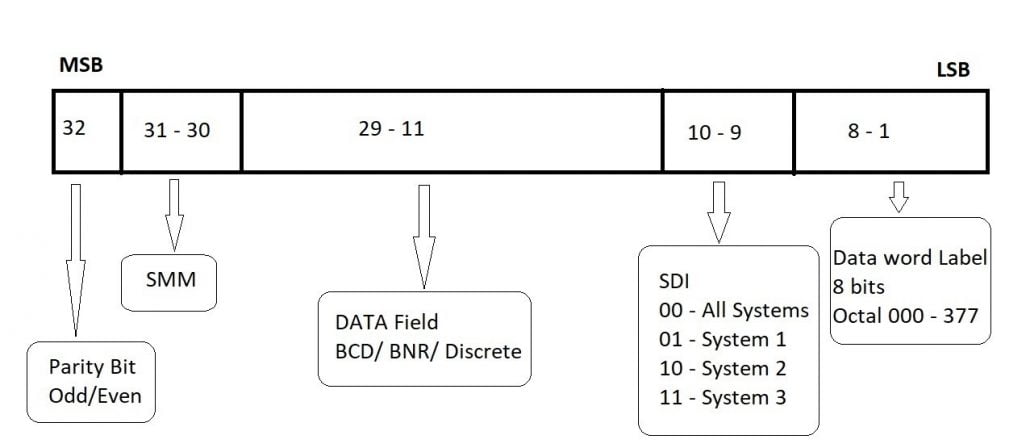ARINC-429 Tutorial: Follow our step-by-step tutorial to learn about ARINC-429 and its implementation in avionics systems. Gain a comprehensive understanding of the protocol, its structure, and its significance in the aviation industry.
This comprehensive ARINC-429 tutorial provides a step-by-step guide to understanding the ARINC-429 protocol and its implementation in avionics systems. By following this tutorial, readers will gain a thorough understanding of the protocol’s structure, data transmission, and reception, as well as its significance in the aviation industry. The tutorial is designed to be accessible for both beginners and professionals seeking in-depth knowledge of ARINC-429.
Introduction:
The ARINC-429 protocol is a widely adopted industry standard for data communication within avionics systems. Understanding the fundamentals of this protocol is essential for aviation professionals involved in system integration, maintenance, and development. This tutorial aims to provide a step-by-step guide to comprehending the ARINC-429 protocol, its structure, and its significance in the aviation industry.

- Overview of the ARINC-429 Protocol:
The ARINC-429 protocol is a two-wire, point-to-point, unidirectional serial data bus that operates at a data rate of 100 kilobits per second (Kbps). It facilitates the exchange of digital data between avionics systems, supporting critical functions such as flight management, navigation, and engine monitoring. The protocol defines electrical characteristics, data formats, and communication protocols for reliable and efficient data transfer.
The ARINC-429 protocol is a well-established industry standard for data communication in avionics systems. It was developed by Aeronautical Radio Incorporated (ARINC) and is widely adopted in commercial and military aircraft. The protocol operates as a point-to-point, unidirectional serial data bus, facilitating the exchange of digital information between avionics systems.
ARINC-429 operates at a data rate of 100 kilobits per second (Kbps). It utilizes a two-wire system, with one wire carrying high voltage (HI) and the other carrying low voltage (LO). This differential voltage encoding scheme, known as bipolar return-to-zero (BRZ), ensures noise immunity and reliable data transmission over long distances.

- Physical Layer and Electrical Characteristics:
ARINC-429 uses a differential voltage encoding scheme known as bipolar return-to-zero (BRZ). This encoding technique helps in noise immunity and enables long-distance data transfer. The protocol requires two wires: a high voltage (HI) and a low voltage (LO), with data transmitted as voltage differences between these wires.
The physical layer of the ARINC-429 protocol defines the electrical characteristics necessary for proper communication between devices. It specifies voltage levels, timing requirements, and impedance matching. The differential voltage between the HI and LO wires represents the data, with a voltage difference of 2.5 volts indicating a binary 1 and a voltage difference of -2.5 volts representing a binary 0.
To ensure proper electrical characteristics, the protocol imposes limitations on wire lengths, maximum capacitance, and minimum resistance. Compliance with these specifications ensures reliable data transfer and minimizes the risk of signal degradation or interference.
- Data Word Structure:
The ARINC-429 protocol organizes data into 32-bit words. Each word consists of several fields, including the label, source/destination identifiers, and data. The label identifies the type of data being transmitted, such as altitude, airspeed, or system status. Source/destination identifiers specify the transmitting or receiving device. The remaining bits are used for the data payload.
ARINC-429 organizes data into 32-bit words, each consisting of several fields. The most significant bit (MSB) of the word serves as the parity bit for error checking. The label, occupying the next 8 bits, identifies the type of data being transmitted, such as altitude, airspeed, or system status. The label is crucial for proper interpretation and processing of the data.
Following the label, the next 19 bits are used for the data payload, conveying the specific information associated with the label. This payload can include parameters such as sensor readings, status flags, or control commands. The remaining bits are allocated for source/destination identifiers, which identify the transmitting or receiving device.
- Data Transmission and Reception:
In ARINC-429, data transmission is initiated by a transmitting device known as the master, while receiving devices act as slaves. The master device sends data words sequentially, and each slave device compares the received label with its own identifier to determine if the data is relevant. If a match occurs, the slave device processes the data payload.
In ARINC-429, data transmission is initiated by a transmitting device known as the master. The master device sends data words sequentially, waiting for acknowledgment from the receiving device before transmitting the next word. The receiving devices, acting as slaves, continuously monitor the data bus for incoming words.
When a slave device receives a word, it compares the label in the word with its own identifier. If there is a match, the slave processes the data payload. If there is no match, the slave ignores the word and waits for the next transmission. This mechanism allows for selective data reception and prevents unnecessary processing, enhancing system efficiency.
- Significance in the Aviation Industry:
The ARINC-429 protocol is highly significant in the aviation industry for several reasons. Firstly, it ensures reliable and accurate data communication between avionics systems, contributing to flight safety and efficiency. The protocol’s differential voltage encoding and error-checking mechanisms enhance data integrity in the presence of electromagnetic interference and noise.
Secondly, the widespread adoption of the ARINC-429 protocol promotes interoperability among avionics systems. It allows different manufacturers’ equipment to communicate seamlessly, facilitating system integration and reducing development costs.
Additionally, the protocol supports a broad range of avionics applications, including flight management systems, weather radar, and communication systems. Its versatility enables the integration of diverse avionic devices, providing a standardized framework for data exchange.
The ARINC-429 protocol’s versatility enables the integration of diverse avionic devices, providing a standardized framework for data exchange. This simplifies system design, integration, and maintenance, fostering efficiency and reducing costs.
The protocol’s widespread use in the aviation industry has also led to the availability of a wide range of compatible components and tools. This includes ARINC-429 interface cards, protocol analyzers, and development kits, which facilitate the implementation and testing of avionics systems.
Furthermore, the ARINC-429 protocol has proven its reliability and resilience over decades of use in various aircraft platforms. Its robustness in demanding aerospace environments, combined with its well-established standards and practices, contributes to the overall safety and dependability of aviation operations.
The protocol’s continued relevance is evident in modern avionics advancements. While newer protocols like ARINC-664 (Avionics Full-Duplex Switched Ethernet) have emerged for high-speed communication, ARINC-429 remains widely used for critical functions and legacy systems. It serves as a backbone for many avionics networks, demonstrating its enduring value and significance.
The ARINC-429 protocol is a fundamental aspect of avionics communication, serving as a reliable, efficient, and widely adopted standard in the aviation industry. Its structure, data transmission principles, and compatibility have made it a cornerstone for the exchange of critical information in aircraft systems. By understanding the ARINC-429 protocol, aviation professionals can effectively design, integrate, maintain, and troubleshoot avionics systems, contributing to the safe and efficient operation of aircraft.
Conclusion:
This step-by-step tutorial has provided a comprehensive understanding of the ARINC-429 protocol and its implementation in avionics systems. By following this tutorial, readers have gained knowledge about the protocol’s structure, data transmission, and reception, as well as its significance in the aviation industry. The ARINC-429 protocol plays a critical role in enabling reliable and efficient data communication within avionics systems, contributing to safe and smooth flight operations.
By following this tutorial, readers have learned about the physical layer and electrical characteristics of the protocol, including the differential voltage encoding scheme. They have also gained insights into the structure of ARINC-429 data words, understanding the significance of labels, source/destination identifiers, and data payloads.
Furthermore, this tutorial has provided a step-by-step overview of data transmission and reception in the ARINC-429 protocol, highlighting the master-slave architecture and the process by which receiving devices filter and process relevant data.
The significance of the ARINC-429 protocol in the aviation industry has been emphasized, with its reliability, interoperability, and versatility being key factors. The protocol ensures accurate data exchange, even in challenging electromagnetic environments, promoting safe and efficient flight operations. Its adoption as an industry standard fosters interoperability among avionics systems and facilitates the integration of diverse avionic devices.
Aviation professionals, system integrators, and technology enthusiasts can now leverage the knowledge gained from this tutorial to better understand the implementation and significance of the ARINC-429 protocol. This understanding will support them in system development, maintenance, troubleshooting, and decision-making related to avionics data communication.
In conclusion, this step-by-step tutorial has provided a comprehensive guide to the ARINC-429 protocol, equipping readers with the knowledge necessary to navigate its intricacies. By demystifying the protocol, this tutorial has contributed to the broader understanding of avionics systems and their efficient operation, ensuring safer and more reliable flights.
References:
ARINC Specification 429-18: Mark 33 Digital Information Transfer System, 2014.
Nielsen, N. E., & Bak, J. L. (2002). The ARINC 429 standard: Past, present, and future. In 21st DASC. IEEE AIAA 21st Digital Avionics Systems Conference. Proceedings (Cat. No.02CH37318) (Vol. 2, pp. 2C1-2C13). IEEE.
Cardullo, F. M., & Porretta, M. (2014). ARINC 429 Interface with STM32F4xx Microcontrollers. In Proceedings of the 7th WSEAS International Conference on Circuits, Systems, Electronics, Control & Signal Processing (CSECS ’14) (pp. 227-232). World Scientific and Engineering Academy and Society (WSEAS).
“ARINC 429 Protocol Tutorial.” AIM Online Training. Accessed June 25, 2023. https://www.aim-online.com/arinc-429-protocol-tutorial/
Sklyarov, M., Levashov, E., Deryugin, A., & Karpov, A. (2019). The implementation of ARINC 429 protocol on field-programmable gate array (FPGA). In 2019 International Russian Automation Conference (RusAutoCon) (pp. 1-6). IEEE.
“ARINC 429 Protocol.” COPPERCHIPP Technology GmbH. Accessed June 25, 2023. https://www.copperchipp.com/arinc-429-protocol/
Anderson, P., & Andrisani, S. (2014). Introduction to avionics systems. CRC Press.
“ARINC 429.” Astronics Corporation. Accessed June 25, 2023. https://www.astronics.com/arinc429
Anderson, J. (2012). Introduction to Flight (7th ed.). McGraw-Hill Education.
“ARINC 429 Protocol.” Collins Aerospace. Accessed June 25, 2023. https://www.collinsaerospace.com/what-we-do/Commercial-Aviation/Cabin/IFE-and-Connectivity/ARINC-429-Protocol
Bruesch, J. J., & Blatherwick, M. (1997). Avionics Development: Getting There Together. AIAA, Aviation Technology, Integration, and Operations Conference. 2028. https://doi.org/10.2514/6.1997-2028
“ARINC 429 Protocol Tutorial.” Data Device Corporation. Accessed June 25, 2023. https://www.ddc-web.com/Products/Protocol-Converters/ARINC-429/ARINC-429-Protocol-Tutorial
ARINC 429-17: Mark 33 Digital Information Transfer System, 2013. Aeronautical Radio Incorporated.
Tarrant, D. (1998). Avionics: elements, software, and functions. CRC Press.
“ARINC 429.” Aerospace Technology. Accessed June 25, 2023. https://www.aerospace-technology.com/projects/arinc429/





